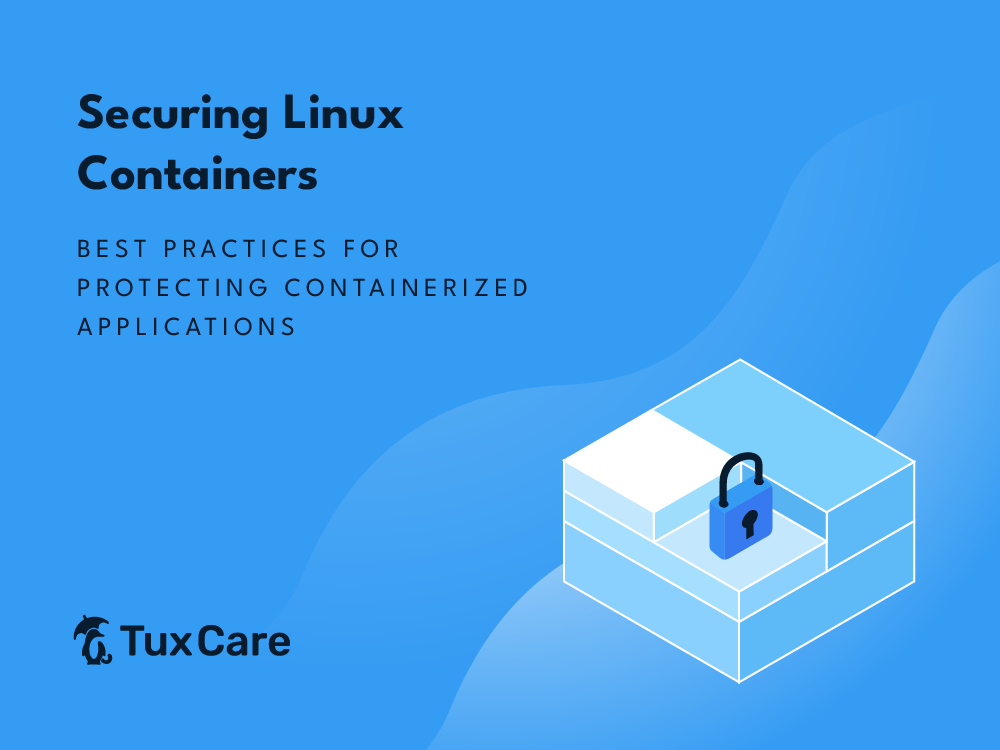Linux containers have become indispensable in modern IT environments, facilitating streamlined deployment, scalability, and resource efficiency.
However, with increased usage comes heightened risk, and securing containerized applications is an essential focus for teams aiming to protect both their infrastructure and sensitive data.
With this in mind, we’ll delve into practical strategies and best practices for securing Linux containers, balancing usability with essential protective measures.
1. Minimize the Attack Surface
A core principle of container security is reducing the attack surface—the total of all points where an unauthorized user could try to access the system. Start by constructing minimal base images.
Lightweight images, such as Alpine Linux, offer fewer packages and potential vulnerabilities than full-fledged operating systems. Customizing container images to remove unnecessary services, packages, and libraries further limits vulnerabilities.
The use of Docker’s FROM scratch approach is another effective tactic. By starting from scratch and adding only the necessary components, you create highly minimal images. Reducing what is packaged means fewer potential entry points for attackers and a stronger security profile overall.
2. Control Privilege Levels
Privileges in Linux containers are powerful—and often mismanaged. Running containers as root opens up significant risks. Attackers that compromise a root container can potentially escape to the host and escalate privileges.
The solution? Avoid root whenever possible. Instead, configure containers to run under non-root user privileges using Docker’s USER directive.
For example, include a USER line in your Dockerfile to specify a non-root user:
FROM ubuntu RUN useradd -m myuser USER myuser
Leveraging Role-Based Access Control (RBAC) adds an additional layer. By assigning specific privileges only to certain users or services, organizations can minimize the impact of any unauthorized container access.
3. Use Namespaces and Control Groups (cgroups)
Namespaces and control groups (cgroups) are fundamental Linux kernel features that enforce isolation and resource control in containers. Namespaces make containers independent of each other by isolating processes, networking, and mount points. Always use the most recent namespace features to prevent information leaks and ensure optimal process isolation.
Cgroups provide resource limits to containers, allowing teams to manage CPU, memory, disk I/O, and more—ensuring that no container monopolizes system resources. Also, don’t forget to set resource quotas to contain any potential damage resulting from resource abuse by compromised or malfunctioning containers.
4. Scan Images for Vulnerabilities
Regularly scanning container images for vulnerabilities should be an integral part of your CI/CD pipeline. Tools like Trivy, Clair, and Anchore can be integrated into automated build pipelines to identify any known vulnerabilities in packages used in your containers.
Continuously update images and dependencies to patch vulnerabilities as new Common Vulnerabilities and Exposures (CVEs) are discovered.
Instead of deploying arbitrary base images from public repositories, use verified images from trusted sources. Verified images come with assurances of quality and security updates. In addition, maintain an internal image registry with controlled access and update policies.
5. Limit Container Capabilities
Linux capabilities allow containers to perform specific privileged actions without requiring full root privileges. By default, many container runtimes provide far more capabilities than are typically needed. Use tools like Docker’s cap-drop to eliminate unnecessary capabilities.
For example, reduce capabilities in the Docker Compose configuration file:
services: webapp: image: webapp-image cap_drop: - NET_RAW - SYS_ADMIN
This approach allows for the principle of least privilege—ensuring that each container runs only with the minimal privileges required.
6. Sign and Verify Images
Container image integrity is critical for preventing tampering. Use Docker Content Trust (DCT) to sign images and ensure that only signed, trusted images are deployed in production. This practice helps verify that the container image’s integrity has not been compromised before deployment.
Furthermore, employ an internal image registry to gain control over image distribution and versioning. Tools such as Notary can facilitate signing and verification processes, providing added assurance that the containers being used are secure.
7. Secure the Host
Container security is highly dependent on the security of the host operating system. Make sure the underlying host is hardened by regularly updating and patching it, employing intrusion detection systems (IDS), and disabling unnecessary services.
A good practice is to use a dedicated, container-optimized host, such as Container-Optimized OS or Red Hat CoreOS (RHCOS), which are built with minimal footprints to reduce the attack surface. These operating systems are crafted specifically for running container workloads, reducing opportunities for host compromise.
For teams using VPS hosting, ensure the virtual servers are hardened, regularly updated, and configured with container-optimized solutions to enhance security and performance.
8. Network Security for Containers
Segmenting container networks is an effective way to limit an attacker’s movement in case of a compromise. Use tools like Docker’s built-in network drivers to isolate containers into different network segments depending on their roles. For example, separate frontend web servers from backend databases to ensure that, even if an attacker gains access to the frontend, they cannot directly reach the backend database.
Also, implement Network Policy in Kubernetes to control ingress and egress traffic. Define rules for what traffic is allowed between containers within clusters and between containers and external services, effectively applying a zero-trust model within your networked containers.
9. Use SELinux and AppArmor
Security-Enhanced Linux (SELinux) and AppArmor are Mandatory Access Control (MAC) systems that help enforce strict security policies on your containers.
With SELinux, you can define which processes are allowed to access which files, significantly mitigating the risk of compromised containers by restricting unauthorized interactions at a granular level.
AppArmor can be configured to restrict what a containerized application can access or execute. Both of these are instrumental in ensuring that even if a container is compromised, the actions it can take are limited, thus reducing the attack’s impact and maintaining the overall integrity of the system.
10. Monitor and Audit Containers
Monitoring container activity is essential for proactive security management. Use tools like Falco or Sysdig to detect abnormal behaviors, such as unauthorized file access, process creation, or privilege escalation attempts. Logging is equally important: ensure logs from containers are centrally managed and protected to avoid tampering.
Container orchestration tools like Kubernetes offer built-in monitoring solutions, such as kube-audit, which track user activities and changes to the container environment. These auditing systems allow organizations to detect and respond to potential security threats quickly.
Conclusion
Container security is not a one-size-fits-all solution. Instead, it is a layered approach involving minimizing attack surfaces, limiting privileges, leveraging kernel isolation features, and enforcing best practices across the container lifecycle.
If they choose to adhere to these outlined best practices, organizations can ensure that their Linux containers remain resilient against evolving security threats while enabling the scalability and efficiency benefits that containerized environments offer.



 Documentation
Documentation Login
Login





